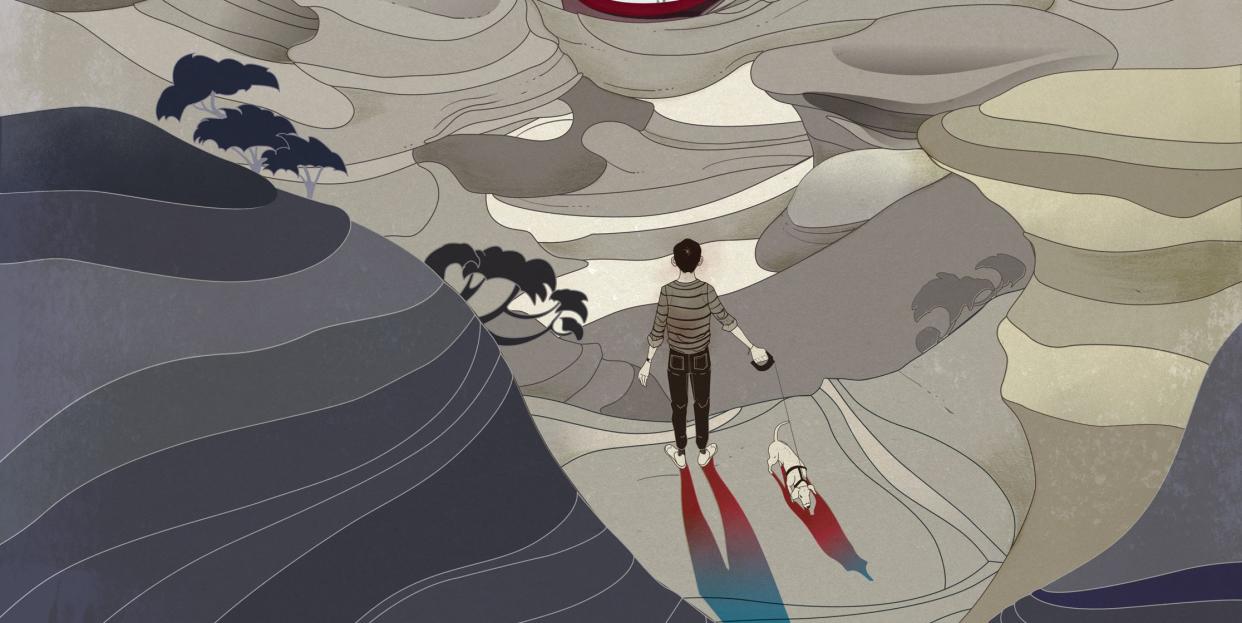Hindsight is 2022: The Psychology Behind Our Cultural Nostalgia

Among his many other principles, Friedrich Nietzsche had this idea of “eternal return.” It means that time is cyclical, and everything that has happened will happen again, like a tape loop. As Nietzsche theorized it in The Gay Science, “This life as you now live it and have lived it, you will have to live once more and innumerable times more; and there will be nothing new in it.” The philosophical question is whether this is a good or a bad thing. Such repetition could be either hellish or reaffirming, showing that life continues.
Whether eternal return is real we can leave to religion. But we already experience it in American culture in the 21st century. As Nietzsche says, there is nothing new. Every television show, film, book, popular restaurant, and lifestyle fad seems to be a rehash of something that already happened. Culture is stuck on a loop: sequel after sequel, remake after remake, Spider-Man after Spider-Man. The plague of Marvel superhero movies was really just the harbinger of a grand, persistent nostalgia that seems to be our era’s preferred framework for consuming culture.
Unable to imagine the future—as a result of the pandemic, climate change, social unrest, a sense of looming apocalypse—we return to the past. After all, the etymology of nostalgia comes down to a painful desire to return home.
Sex and the City is back. Ryan Murphy is dipping into the well of midcentury mishegoss for a new Netflix series. Luca Guadagnino is remaking Brideshead Revisited for the BBC. Beyond the literal remakes, streaming services fight over access to nostalgic classics: Seinfeld, Friends, The Office. The rewatching of prestige TV series became something of a competition during the pandemic. At first it was Mad Men (itself a piece of nostalgia for midcentury New York), and then The Sopranos became the primary target, elucidated with essays and reconsiderations and, finally, a disappointing prequel film.
Like storylines, there are certain physical spaces we can’t resist returning to in hectic moments. These interiors are, without fail, familiar and cozy rather than austere or challenging. Take the French brasserie. It’s a classic with a constant whiff of the past, as if it exists on a separate timeline. One can barely penetrate the crowds at New York’s Balthazar right now—the flagship of Keith McNally’s design-as-comfort-food restaurants. The offspring it inspired (Frenchette, Le CouCou, Le Crocodile) are similarly choked with diners. Rickety stools are out; velvet banquettes are in.
So are private clubs. London’s Casa Cruz is opening a six-story outpost on the Upper East Side, with a private floor for its investors only. The Britely, in Los Angeles, is a social club reviving old-school Hollywood glamour (chandeliers in the form of pink feather cascades) along with a menu from ’90s celebrity chef Wolfgang Puck. Meanwhile, travel influencers prefer glamorous perennials like Paris and Lake Como to rugged, far-flung destinations.
Here’s the thing about indulging in classics: They provide experiences we know are highly unlikely to let us down. At the moment we can hardly be blamed for such tendencies. The past two years have been frightening enough that guilty pleasures are more than justified. But nostalgia consumption comes with a cost. Too much has a way of impeding new culture, and there’s not much incentive to stop wallowing in it. Incidentally, even our most newfangled creations promote our obsessions with the past: Algorithmic social media feeds measure what we already engage with in order to recommend new content. Watch Bridgerton on Netflix, and suddenly every other Regency and Victorian-era series is at the top of your homescreen. TikTok’s “For You” feed provides only content that is familiar or universally inoffensive. The personalized echo chamber of political content is often lamented; our cultural echo chambers can be equally smothering.
More worrying still is that this phenomenon has a deadening effect on creativity in general, because it’s harder to reach audiences with original ideas when technology is systematically weeding out anything unusual. With our digital cultural channels, art can be profitable only if it gets attention, and it can get attention only if it matches a preexisting pattern. That pattern is called nostalgia, and while it’s pleasurable, is it not ultimately boring? Per Nietzsche, we can be happy with the idea that life as a whole repeats, but no one wants to be doomed to the same TV show for eternity.
This story appears in the February 2022 issue of Town & Country. SUBSCRIBE NOW
You Might Also Like

